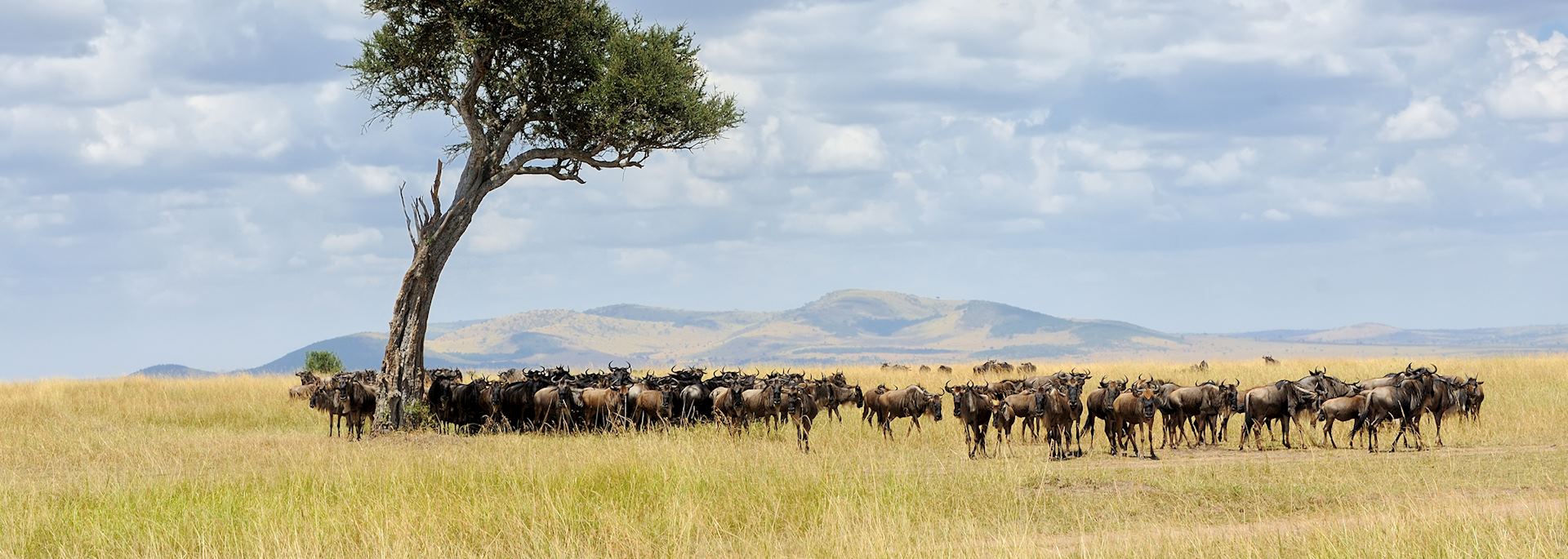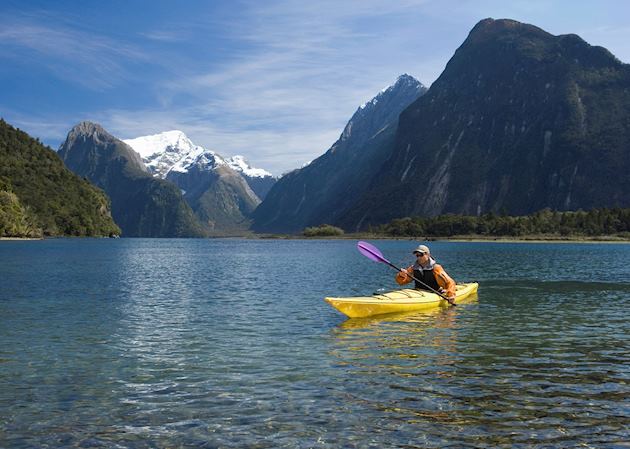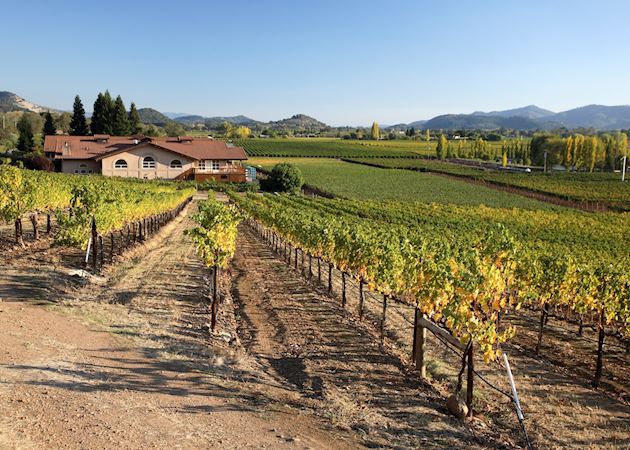The silhouette of an elephant herd marching along the horizon, the fragrant scent of the bush coated in fresh morning dew on your dawn game drive, the sounds of animals near and far whooping, roaring, and rumbling as daylight fades... specialists Natasha and Abigail rediscovered the sensory overload that can only come from a safari on their recent research trip to Kenya. Here, they share some of the new experiences they tried and tested while there, along with the latest on what it’s like to travel right now.
How did it feel to travel again?
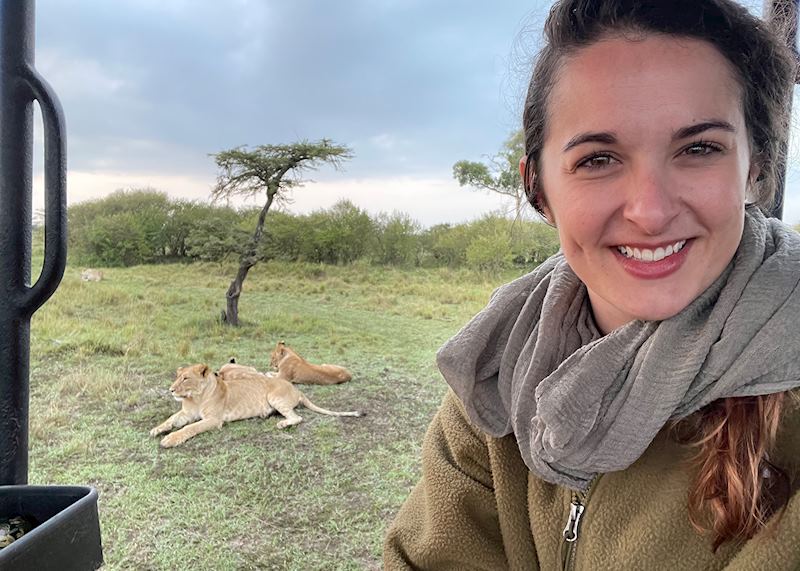

Abigail: So good, it was exciting to be back on safari — experiencing the sights, smells, and sounds of the bush. Everyone was so happy to have visitors again. I hadn’t been outside the States since before Covid, and visiting Kenya really opened my eyes to how we all have had a shared experience. I’d talk to my guides about the week Covid hit and theirs sounded just like my week, so it was uniting and comforting to see that we’re all heading in the same direction and adapting together.
Everything felt completely normal once I got there. There were fewer guests than I expected, but we were visiting at a quieter time, and I know things are really picking up for the rest of the year. Camp staff check if you’d prefer for them to wear masks, but I think safaris are ideal as you spend most of your time out in the open.
What makes Kenya stand out as a safari destination?
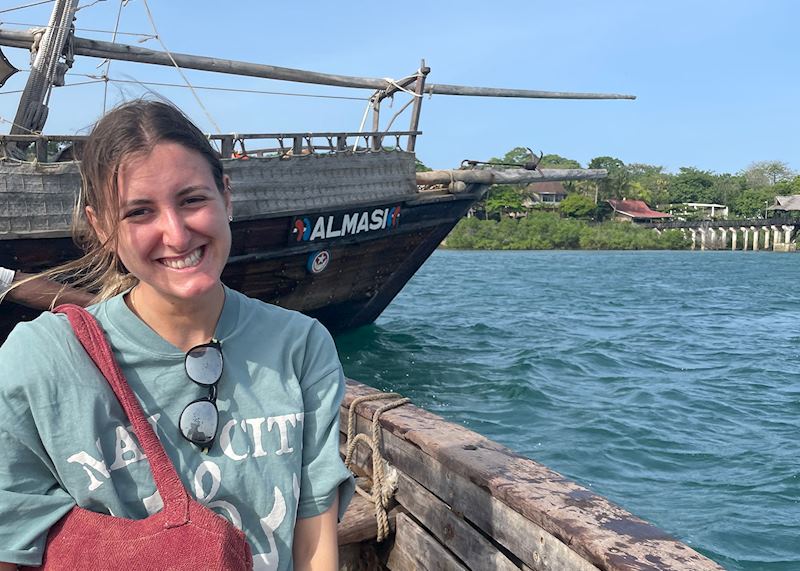
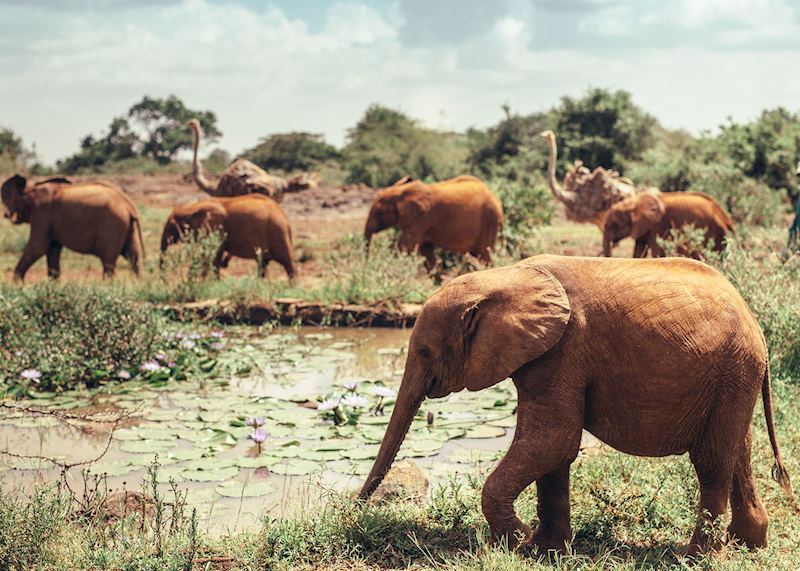
Natasha: The incredible wildlife, of course, and the wide range of activities you can do there, which makes it ideal for anyone on a first-time safari and for families. As well as the usual game drives, you can do walking safaris (accompanied by camels, in certain places), night drives to see nocturnal species, sleep outs under the stars, community visits to learn more about the local culture… your days can be really varied. And, because you’re often staying on private conservancies, your wildlife encounters are more intimate than in national parks as visitor numbers are limited to those staying in the conservancy’s camps.
Another thing I find striking about Kenya is that you can see how people live alongside the wildlife — something you don’t get in a lot of other destinations where parks and reserves are more remote. We even saw elephant herds right from our train window!
Around the Masai Mara in particular, you get Maasai-owned private conservancies that border Maasai villages. The camps there donate a portion of their profits to these villages in exchange for the use of the land, as well as employing many of their staff from the local area, so everyone benefits from tourism and from conserving wildlife.
There’s a big focus on conservation in Kenya — everywhere I went, people seemed to be talking about it. Even in Nairobi, schools make sure the children get a chance to visit Nairobi National Park and learn about the wildlife that’s right on their doorstep so they grow up appreciating it and wanting to care for it.
We've heard Kenya is heavily focused on responsible travel, did you see this during your trip?

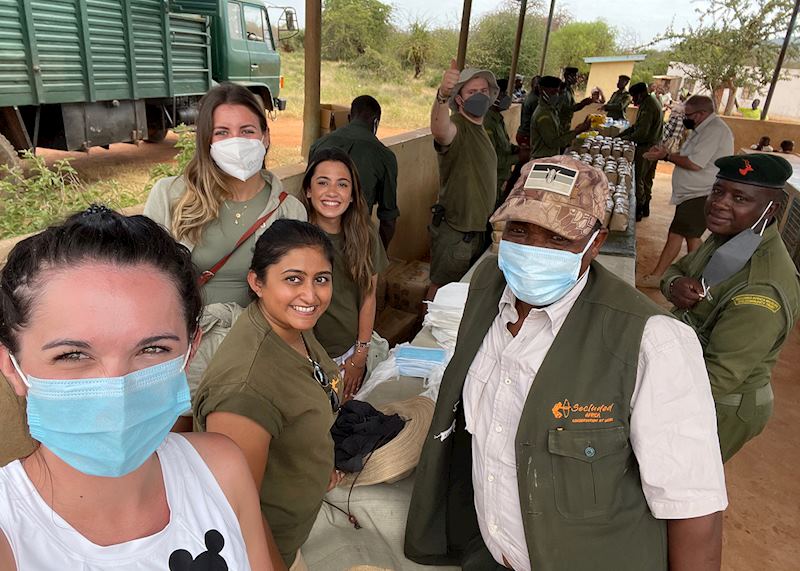
Natasha: Yes, while we were staying at Kipalo Hills (a camp set in a private conservancy within Tsavo West National Park), we spent time with some of the rangers who protect the park. It’s something any guest staying there can do. The rangers are particularly focused on protecting the park’s 140-strong black rhino population. We drove through the fenced rhino conservation area, and it was incredible to see so many of the animals.
The rangers explained that the enclosure is really high tech — any firearm that passes through it is detected immediately and the rangers are alerted, so within minutes helicopters, drivers, and drones would arrive to stop any poachers in their tracks.
They also told us that some people are driven to poach by crop failure as they try to feed their families. In these cases, rather than arresting them, they have a project in place where they educate them, give them food, and teach them skills to help them earn a living.
It was so interesting learning first-hand about their efforts to conserve the wildlife and to engage with and support local people. We happened to be there when they were conducting a food drive for the 300 poorest families from the surrounding villages, so we helped to distribute food and other essentials like cooking oil, flour, and clean water — enough to last families several months.
What were some of your wildlife highlights?
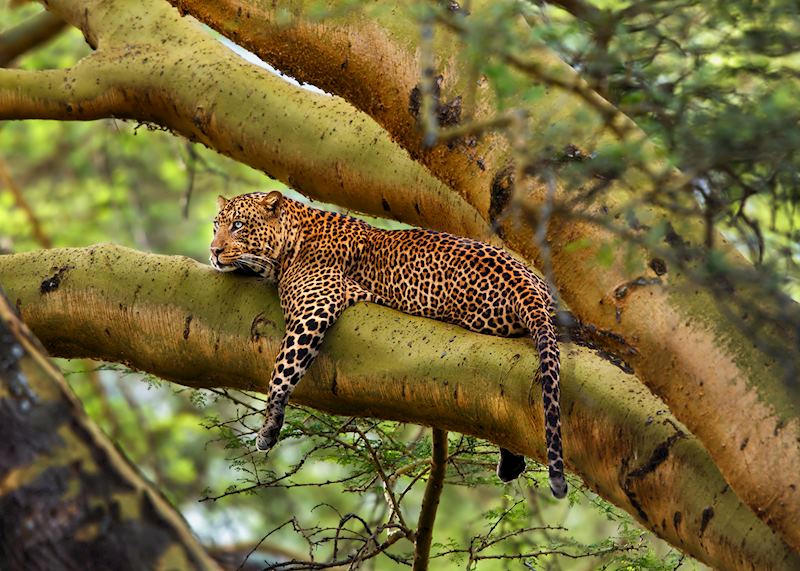
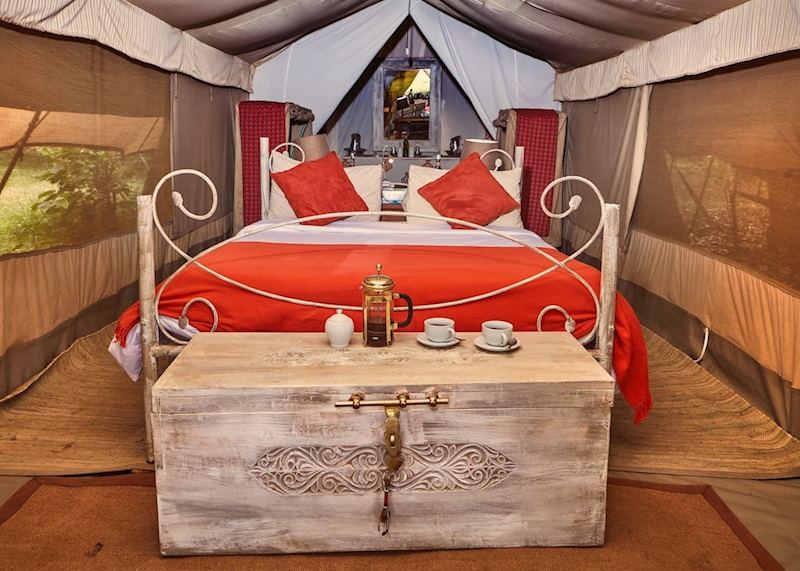
Abigail: I had some of my most intimate wildlife encounters and saw larger numbers of animals than I’d seen in other safari destinations. One sighting that stands out happened while I was staying at Speke’s Camp, in the Mara North Conservancy. Here, every guest gets a private game vehicle and guide. Mine was known as the ‘leopard whisperer’, and I soon found out why.
We set off on an afternoon game drive and it wasn’t long before we came across a female leopard just waking from a nap. After a long stretch, she hid her cub in the trees and set off on her evening hunt. We followed her for two hours — it was clear she wasn’t fazed by our presence as she’d often walk right alongside our vehicle.
As I sipped sundowners, I watched her stalk warthog and impala, and my guide explained her hunting tactics. In the end, she jumped up into a tree where she’d already stored a previous kill —leopard are one of the only predators that hunt even if they already have food, just in case.
We also saw a large lion pride setting off on a hunt, a lot of animals with young as it was calving season, and plenty of elephant, including a herd with a newborn calf, which they were very protective of.
Do you have any other highlights from your trip?
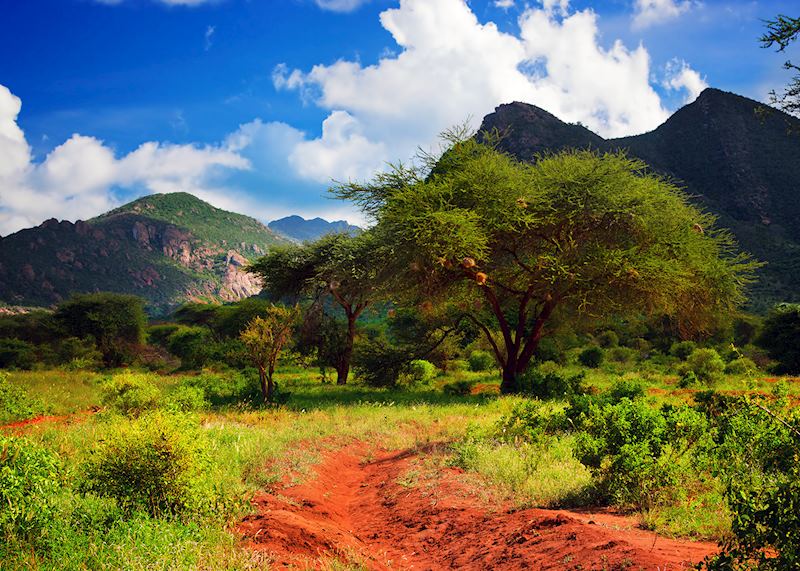
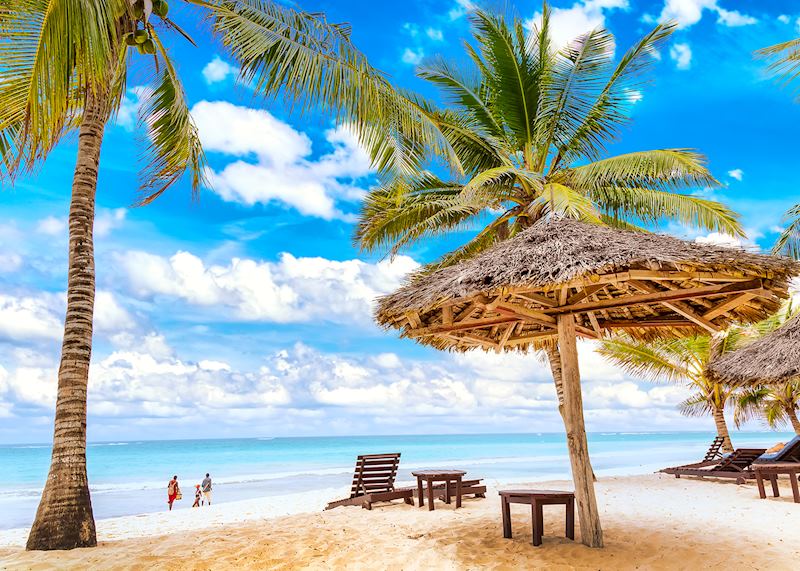
Natasha: In Tsavo, I loved heading out on a bush walk. There’s something about being on foot and coming across evidence that animals have recently passed along the very same place you’re standing in, whether it’s paw prints in the ground or trees with bark that’s been rubbed down by elephant tusks. We finished at a kopje (rocky outcrop) with far-reaching views over the park, where the camp staff had set up a bush dinner for us. The chef was there cooking a leg of lamb, drinks were served over ice, and we sat by the campfire listening to the distant calls of zebra, hyena, and unfamiliar birds. Then the stars came out and provided a completely different show. It was enthralling.
As part of our trip, we also tested out the train journey between Nairobi, Tsavo, and Mombasa, for access to the coast. Basic but comfortable, it makes a great low-cost and more eco-friendly alternative to flying. You also get to see more of the country as you pass through towns, villages, wildlife areas, and farmland.
Once at Mombasa, we were driven to Diani Beach for some downtime. We had the difficult job of trying out a new snorkel trip to two coral reefs, spotting a dolphin en route. Beneath the azure waters the marine life was something else — parrotfish, puffer fish, and rainbow fish dazzled past me. You also have the option to dive for a chance to see turtles and rays. We anchored at a small island for a three-course lunch of fresh seafood — succulent crab and fish soup prepared using traditional methods by some local ladies from the island’s village.
How easy was it to travel to Kenya?
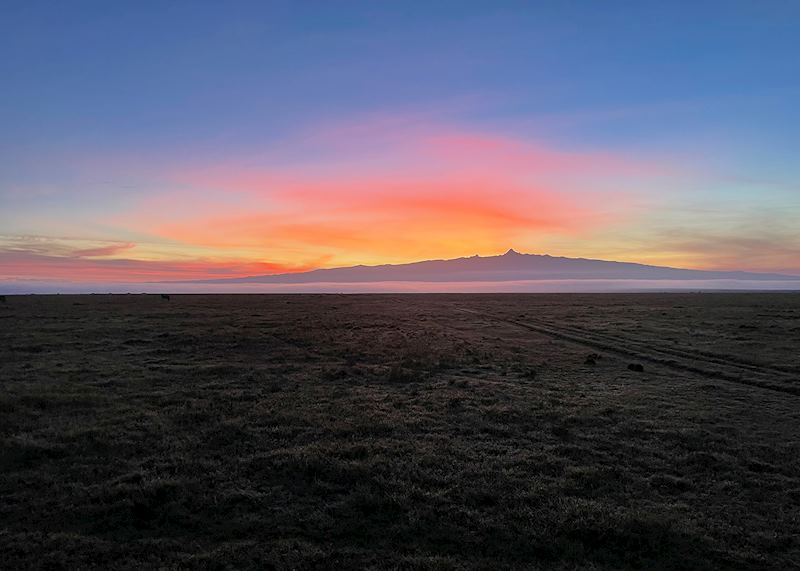
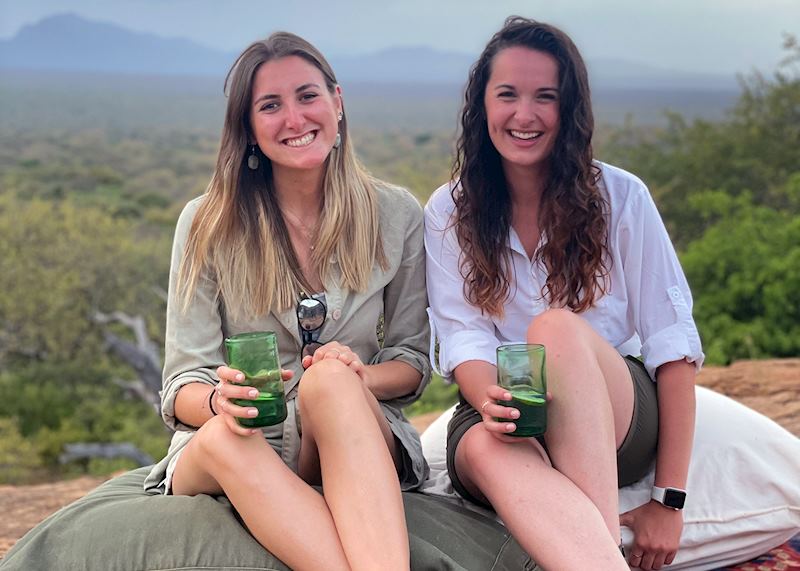
Abigail: I found it pretty easy. You need to have had a Covid vaccine, and a negative test within 72 hours of your departure. You also have to fill in a couple of forms, including a health declaration form and a passenger locator form to say where you’ll be staying and how long for. The health declaration form can only be filled in once you have your test result back, so you’ll need to do this right before you travel. This generates a QR code that’s checked when you arrive.
The flights felt normal, other than having to wear a mask — some airlines are more diligent than others at checking this. Once at the airport, we can arrange for you to be met by a representative who’ll help you navigate customs and show you which forms are needed when, which I found very helpful and sped things up.
Get me there

We can shape a trip to Kenya around what you want to see and do. You might want to follow a safari with time on the beach, or prefer to combine the Masai Mara with Kenya’s remote northern areas for a wide variety of wildlife, landscapes, and experiences.
Was this useful?

